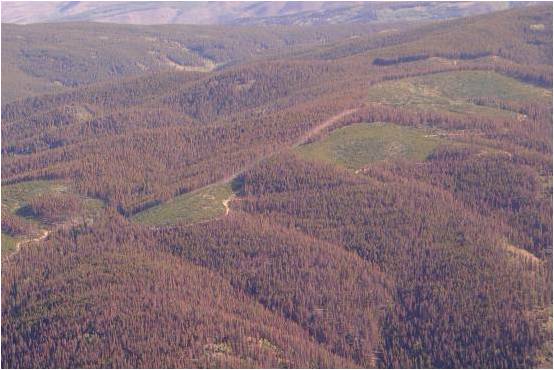For decades we have debated the destruction of our national forests caused by a lack of management. We have watched catastrophic fires incinerate 200 million acres over the last 30 years. Yet we still cannot escape the conceited, supercilious popinjays in the environmental industry who insist on dictating forestry policy to professional foresters.
The latest demonstration of their destructive prescriptions is a new Forest Service proposal to rewrite all 128 national forest management plans to save “old growth.” The idea that it must be “saved” from active management is pure flapdoodle, or perhaps flummadiddle if you are into semantics. One would think after almost all leaders – even most environmental leaders – agree that active management must return to the landscape to save the forests, the agency in charge would end its reliance on outdated slogans like “save the old growth.”
Agency chiefs have appeared at conferences and made speeches for years, giving lip service to the need to restore forests that are dying, collapsing, and burning – a disaster then-Senator Ken Salazar once called the “Katrina of the West.” Unfortunately, not much progress has been made in the years since activists and zealots put a stop to almost all forest management, building a virtual wall against human activity. Instead, the bark beetles went unchecked, marching across millions of acres of forests from northern New Mexico to British Columbia, leaving a trail of destruction that would make Sherman blush. Colorado alone has over 800 million dead trees across 3.4 million acres.
Opponents of forest management are still chanting about spotted owls and clear-cutting and related issues from the distant past, failing to understand or acknowledge that some species of trees will not grow back without clearcutting, while others will not grow back with it. Old growth is a similarly discredited once-size-fits-all mantra, as foresters know some species can live more than a thousand years, and others barely a hundred. In other words, all types of forests cannot be managed the same in all places. Yet that is precisely what the agency’s latest pronunciamento would do.
The edict is based, of course, on the assertion that old growth must be saved for a new reason, climate change. But are officials really so ignorant of the vital role young, healthy, growing trees play in capturing carbon dioxide? Or of the immense and unprecedented emission of carbon dioxide that results from disastrous forest fires? Or the role professional management can play in ensuring healthy growing forests? Sadly, the agenda driving such decisions is still based – after all these years – on political sloganeering designed to raise money for non-profit groups. They still rely on sky-is-falling fearmongering because that’s what generates money and power.
Predictably, the official proposal ignores laws governing forest management, especially those referring to “multiple use” and “sustained yield,” while claiming that the plan will, as a Biden executive order put it, “Strengthen the Nation’s Forests, Communities, and Local Economies.” Translation: let even more forests die and burn, while killing communities, and local economies.
The federal Data Quality Act requires management decisions to be based on the best available scientific knowledge and research. But this proposal instead insists on careful consideration of “Indigenous Knowledge,” which is largely based on legend, tradition, and folklore, not science. There are also references to the use of artificial intelligence, though its precise role is not defined. No law ever passed by Congress includes such criteria for managing national forests, but that apparently cannot stop people still blindly dedicated to a 1970s agenda to kill all remaining forest products businesses.
I have to spend half an hour sorting through the entire bin at the big box store to find a handful of semi-straight 2x4s, most of which are imported from Canada or elsewhere, while America’s own domestic lumber supplies remain mostly off limits. The politicians, environmental lawyers, and judges who tie professional forest managers’ hands evidently do not care about that, any more than they care about the vast swaths of dead forests awaiting their inevitable appointment with lightning.
Instead of showing leadership on an issue that is so vital to millions of westerners, the activists who apparently dictate forest policy to the government are instead squandering the greatest legacy of the conservation movement, the national forests. They are still hung up on obsolete jingles like “save the old growth.” The word “meretricious” refers to something that seems attractive at first but on careful examination has no value at all. It’s the perfect description of this new-old policy. Also called flapdoodle.





Comments on this entry are closed.